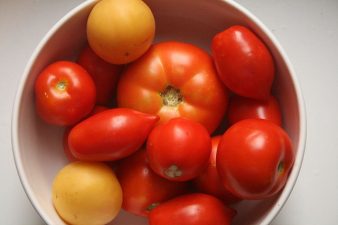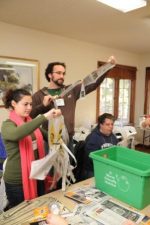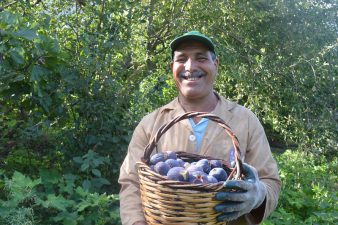
The UN recognizes the importance of ancient Spanish farming techniques. With climates similar to the Levant and influenced by North Africa, there is so much the Middle East can learn from Spain.
A 1,200-year-old farming and fishing site known as the “Horta” (garden) of Valencia has been recognized on the register of Globally Important Agricultural Heritage Systems (GIAHS), managed by the UN Food and Agriculture Organization (FAO).
Irrigated by the Turia river – thanks to a complex, gravity irrigation network designed in the 8th century and spreading over a dozen of municipalities around the city of Valencia – the site is home to Spain’s largest lake (Albufera).

“The Horta of Valencia is invaluable. Half of the crops grown here are at risk of disappearing in the region. It provides for both farmers and fishers. Its citrus fruits have a Geographical Indication (GI) label due to their high quality and variety. The site is also home to a wide range of birds, fish and plants, many classified as rare, endemic or endangered,” said FAO’s Yoshihide Endo who coordinates the GIAHS programme.
The abundance of the Horta
The Horta is made up of 6,000 small agricultural holdings (up to one hectare each), and thousands of farmland plots. About 80 percent of the area is used to grow fruits and some 50 vegetable crops.
Around 4,000 hectares are used to grow vegetables, especially onions, artichokes, pumpkins and lettuce. Oranges, mandarins and tiger nuts are significant in the northern part of the site whilst 2,000 hectares of centuries-old local rice varieties are cultivated in the southern area, which extends into the Albufera Natural Park.
California builds first farm-to-table new home community
The 2,800-hectare park is home to Spain’s largest lake and one of the most important wetland areas on the Iberian Peninsula. It brings food and other benefits to both fishers and rice farmers.
With ample access to water and fertile soils, farmers are able to harvest up to three times per year.
Crop diversification, with a number of local varieties and the division of the land into small plots have been key to making the site resilient.
Farmers use sustainable agricultural techniques that preserve water and soil resources. The irrigation systems built by the Islamic communities who set up the first Andalusian ditches and hydraulic spaces have been carefully conserved over centuries and are functional to this day.
The water management system is unique as farmers are part of Water Users’ Associations (WUA) and refer to their own rules and regulations to solve any issues. There is also a Water Court (Tribunal de las Aguas) – the oldest institution of justice in Spain to solve disputes over water use.
With its dunes, beaches, forest, lake and rice fields, the site is home to birds, fish, and over 800 species of plants, many classified as rare, endemic or endangered both in Europe and Spain.
The other GIAHS sites in Spain are: the salt producing Valle Salado of Añana, olive groves in Sénia, Tarragona, and raisins production in Axarquía, Málaga.



